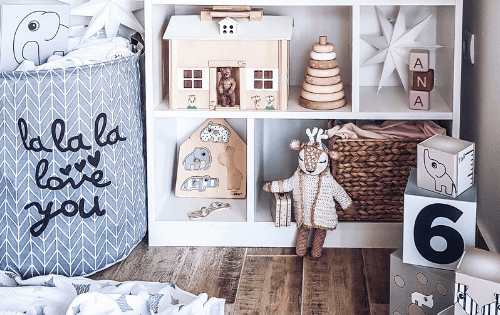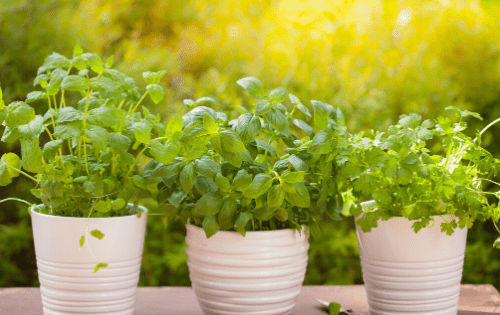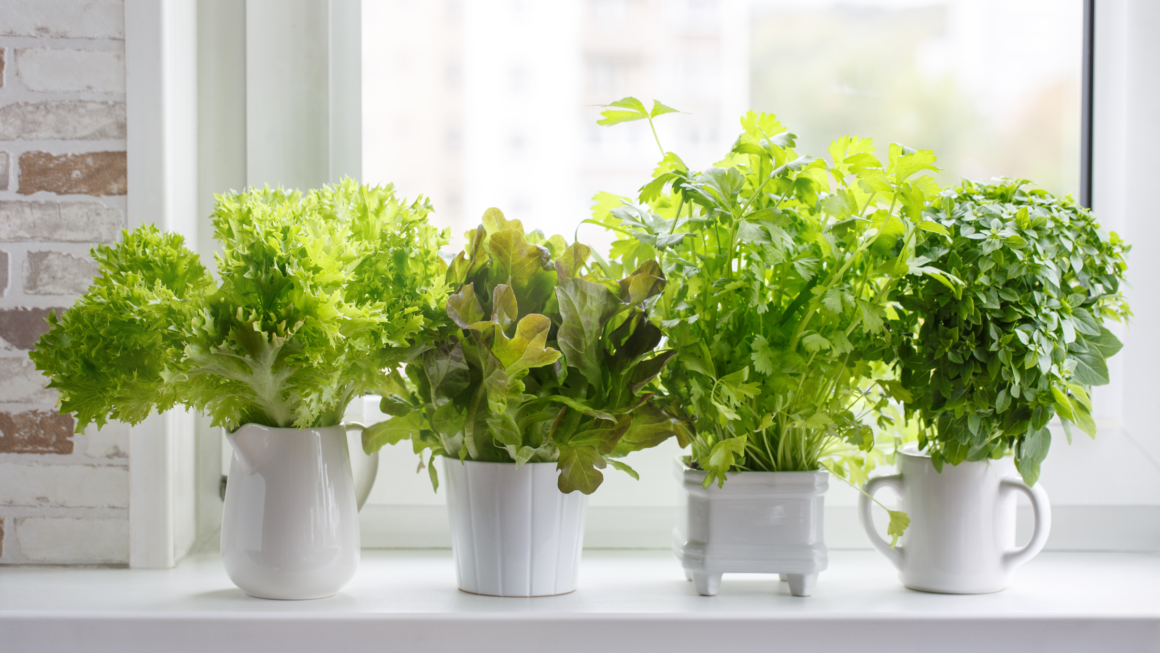
The Best Indoor Herb Garden Kits
So you have decided that you want to create an indoor herb garden but with so many different options out there how do you know where to start or if you are purchasing a good kit
That’s where we are here to help you! Since we love all things indoor herb garden we dive into why an indoor herb garden is a great idea and to make it easier for you we have searched high and low to bring you the best indoor herb garden kits so you can start having fresh herbs in your meals.
What is an Indoor Herb Garden Kit?
An indoor herb garden is a collection of various herbs grown inside a home or enclosed space, typically in containers like pots, planters, or hydroponic systems. It allows you to cultivate fresh herbs year-round, regardless of the outdoor weather conditions.
Indoor herb gardens are often placed near windows, on kitchen counters, or in well-lit areas where the plants can receive adequate sunlight or artificial grow lights. Popular herbs for indoor gardens include basil, mint, thyme, rosemary, and parsley. These gardens are a convenient way to have fresh, aromatic herbs for cooking, tea, and even natural remedies right at your fingertips.
Why an Indoor Herb Garden is a Great Idea!
Indoor herb gardens are a great idea for several reasons:
Sustainability: Growing herbs indoors reduces waste, as you can pick only what you need. You also avoid the plastic packaging that often comes with store-bought herbs.
Convenience: Having fresh herbs right in your home means you can quickly add flavor to your cooking without having to run to the store. It’s particularly handy for those who cook frequently.
Year-Round Access: Since indoor herb gardens are not affected by seasonal changes, you can grow and harvest herbs all year, even in the winter months when outdoor gardening isn’t feasible.
Space-Efficient: Indoor herb gardens don’t require a lot of space. They can be grown on windowsills, countertops, or in small containers, making them ideal for apartments or homes with limited outdoor space.
Cost-Effective: Growing your own herbs can save money over time compared to buying fresh herbs from the store, which can be expensive and often spoil quickly.
Health Benefits: Freshly grown herbs are packed with flavor and nutrients. They can enhance the taste of dishes naturally, reducing the need for excessive salt or artificial seasonings.
Air Purification: Certain herbs, like mint and basil, can help improve indoor air quality by releasing oxygen and absorbing pollutants, creating a fresher living environment.
Aesthetic and Therapeutic Value: Indoor herb gardens add a touch of greenery and natural beauty to your home. Caring for plants has also been shown to reduce stress and promote a sense of well-being.
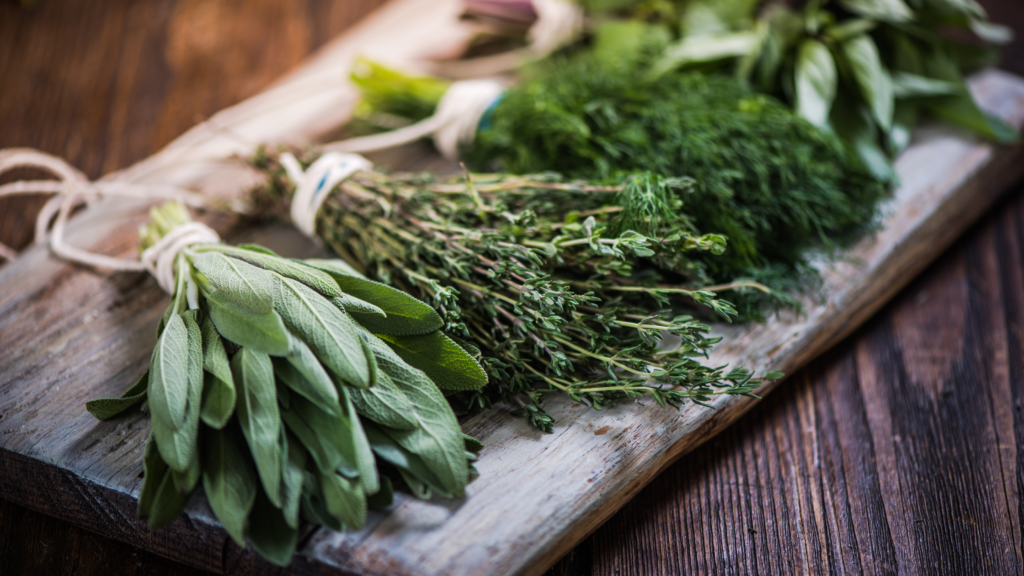
How to start an Indoor Herb Garden
Starting an indoor herb garden is relatively simple and can be done in a few easy steps. Here’s how to get started:
1. Choose Your Herbs
Select the herbs you want to grow based on your needs and space. Some popular indoor herbs include:
- Basil
- Mint
- Thyme
- Rosemary
- Parsley
- Chives
- Oregano
- Cilantro
Consider how often you use these herbs in your cooking and their growth requirements.
2. Select Containers
Pick containers with proper drainage holes to prevent water from accumulating at the bottom. If the pots don’t have drainage, add a layer of pebbles at the bottom to help with water drainage. Containers can be pots, window boxes, or even repurposed jars as long as they offer enough space for the roots to grow.
3. Choose the Right Soil
Use a high-quality potting mix specifically designed for herbs or vegetables. Avoid garden soil, as it can be too dense for indoor plants and may not drain well. The potting mix should be light and well-draining to prevent waterlogged roots.
4. Find a Sunny Spot
Herbs typically require 6-8 hours of sunlight per day. Place your indoor herb garden near a sunny window. If natural light is limited, consider using grow lights to supplement the light. You can also rotate the plants every few days to ensure even light distribution.
5. Water Properly
Herbs need consistent moisture but should not be overwatered. Check the soil regularly; when the top inch feels dry to the touch, it’s time to water. Be cautious not to let the pots sit in water, as this can lead to root rot.
6. Fertilize Sparingly
Indoor herbs don’t need a lot of fertilizer, but a light feeding every few weeks can encourage growth. Use an organic or all-purpose liquid fertilizer diluted to half-strength. Over-fertilizing can lead to excessive leaf growth at the expense of flavor, so apply sparingly.
7. Harvest Regularly
Harvesting your herbs encourages new growth and keeps the plants healthy. Always pinch or snip off leaves just above a set of leaves, ensuring you leave enough for the plant to continue growing.
8. Monitor for Pests
Indoor plants are less prone to pests than outdoor ones, but occasionally you may spot insects like aphids or spider mites. Inspect your plants regularly and, if needed, use organic pest control methods such as neem oil or insecticidal soap.
Optional Steps:
- Consider Hydroponics: If you prefer a soil-free option, hydroponic systems can be used to grow herbs indoors using water and nutrients.
- Use Herb Kits: Many companies sell indoor herb garden kits that come with everything you need, including seeds, soil, and containers, making it even easier to get started.
By following these steps, you can successfully start and maintain a thriving indoor herb garden that provides fresh herbs for your home year-round.
Best Indoor Herb Gardening Kits
Dryden Trading Co Indoor Herb Garden Kit
This is an adorable kit that comes with its own planter box. In the kit, you receive 5 popular herbs, the soil and planting instructions. The Dryden Trading Co herb kit would also make a fabulous gift for those hard to buy for people.
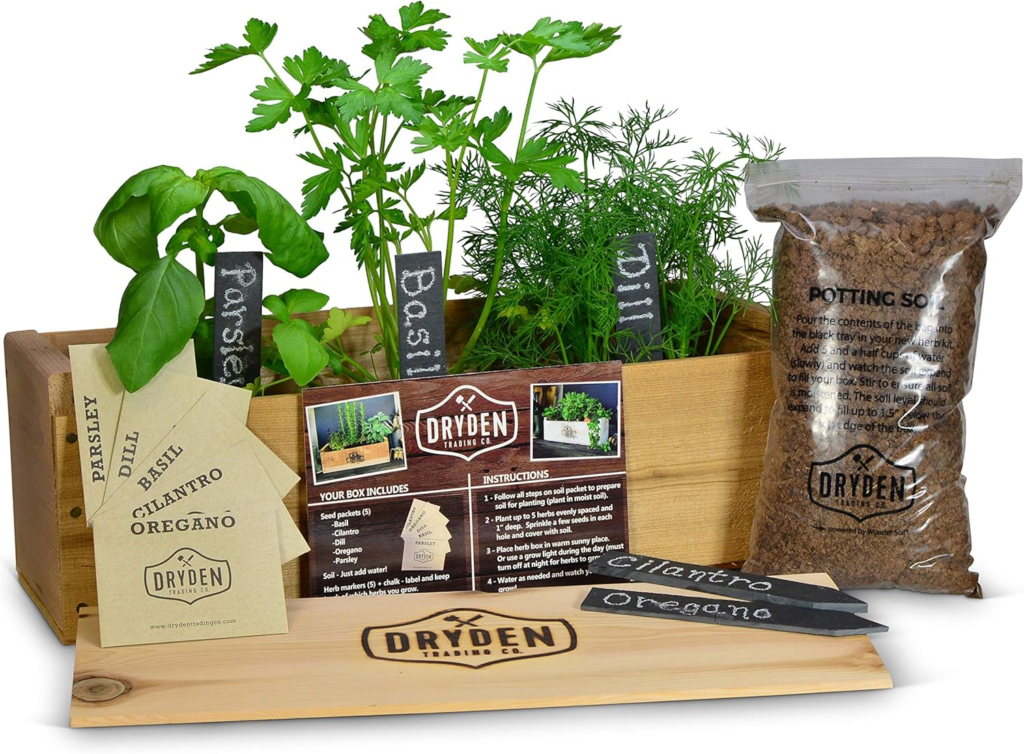
Organic Home Garden
If you prefer to have an organic option then this is the kit for you! Each Organic Home Garden Kit from Spade to Fork comes with 5 types of certified USDA organic non GMO seeds, 5 certified USDA organic peat pots, 5 soil disks and 5 custom wood burnt plant markers.
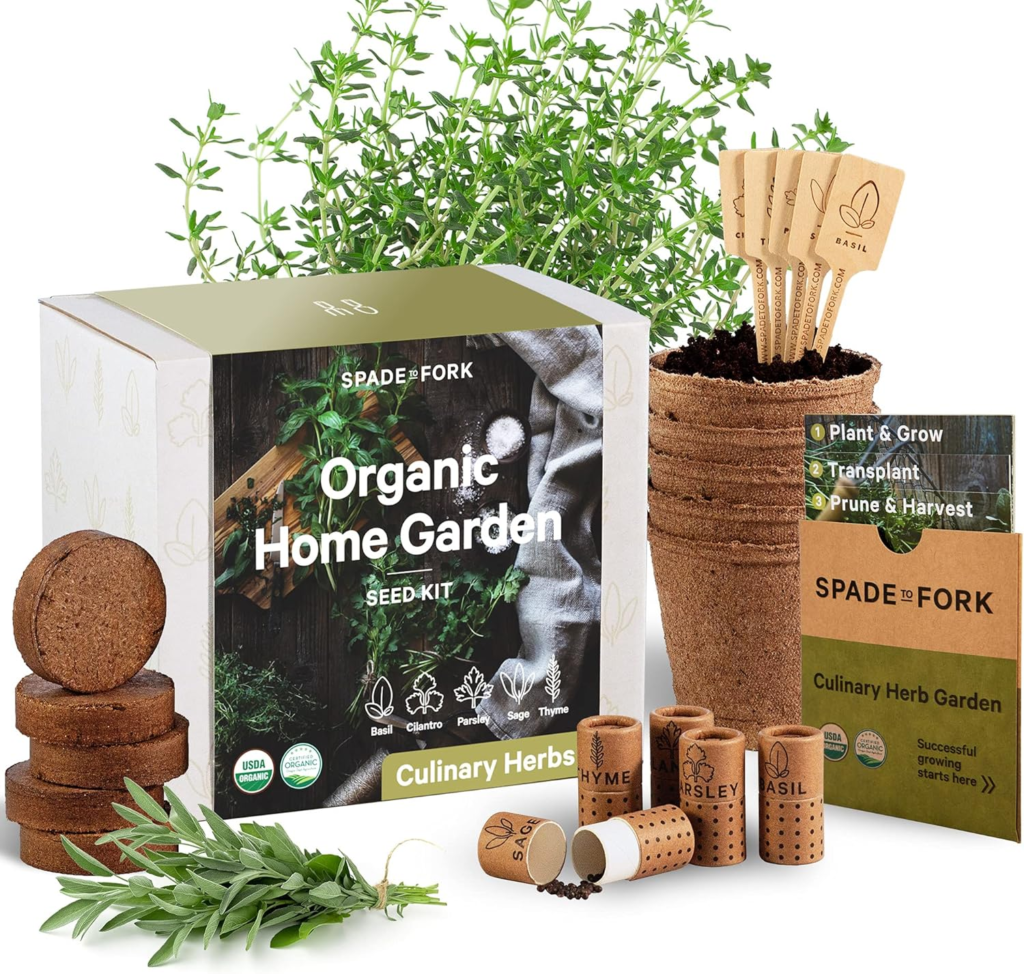
Indoor Garden Hydroponics Growing System
An Indoor Garden Hydroponics Growing System is a great option for an Indoor herb growing kit. These kits include a water reservoir, an overhead grow LED light and a circulation system that keeps the water fresh. A great idea for those homes that don’t get much sunlight or during winter months.

LetPot Hydroponics Growing System
The LetPot Hydroponics Growing System is a 12 pods Smart Herb Garden Kit which features the exclusive LetPot app. This app allows you to control you garden from anywhere and adjust the 0-24 hours LED lighting schedule to provide your plants with the perfect amount of light. It also has an innovative reminder system so you never forget to water your plants. A popular options in many households!
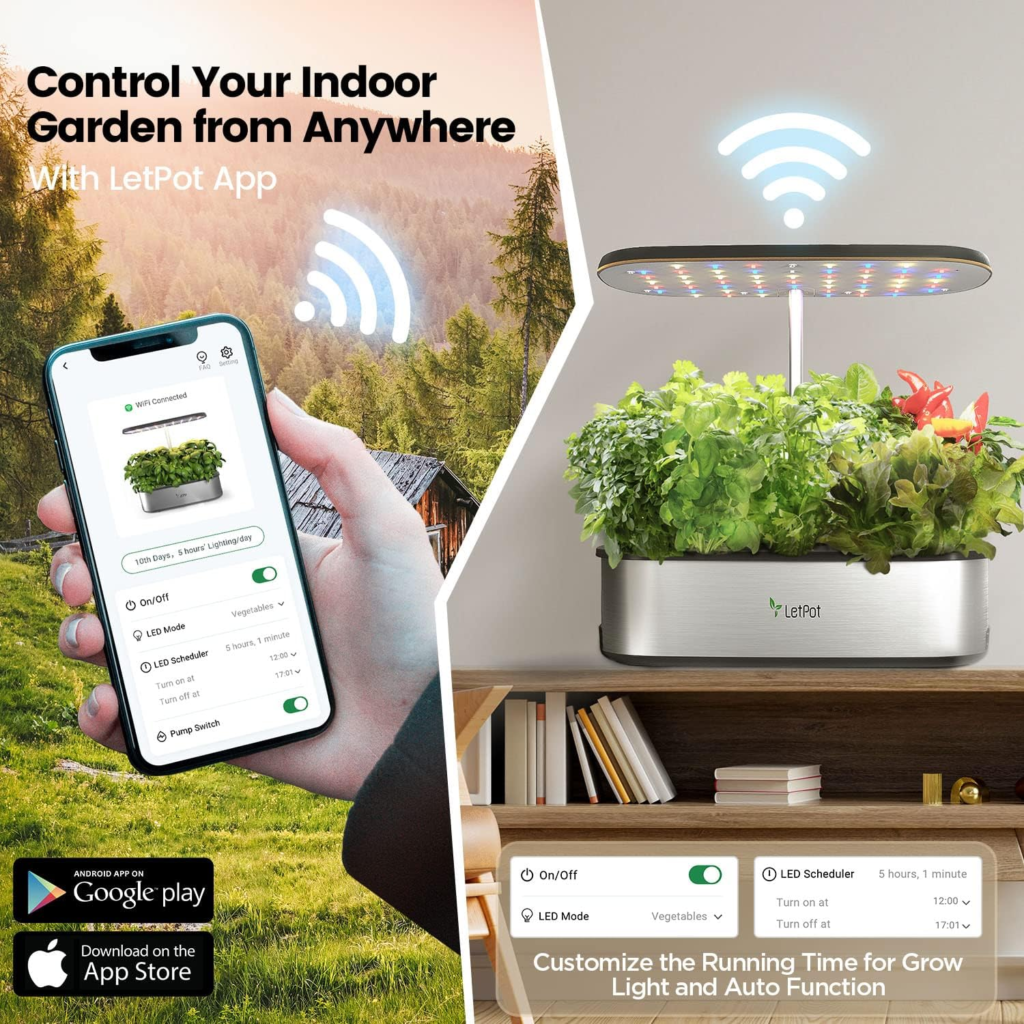
Home Grown Indoor Herb Garden Kit with Glazed Ceramic Pots
A great complete herb garden kit where you receive all you need to grow your fresh herbs. The kit includes 4 Herb Seed Varieties, 4 Plant Markers, 4 Soil Pellets, 4 Reusable Pots and Trays, Nutrition Pack and Growing Guide. These kits make a perfect gift idea for Plant Lovers!
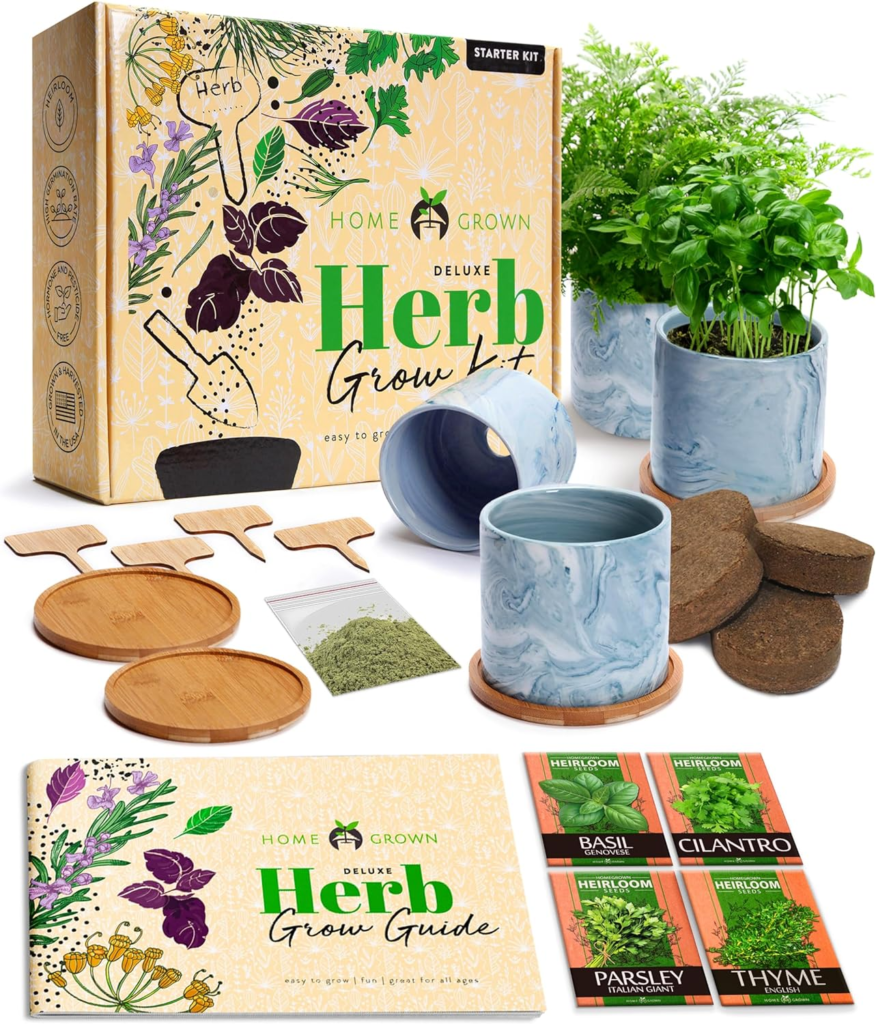
The Last Thing You Need to Know about your Indoor Herb Garden Kits
Here are a few additional tips and considerations for maintaining a thriving indoor herb garden:
1. Temperature and Humidity
- Ideal Temperature: Most herbs prefer temperatures between 60-70°F (15-21°C). Avoid placing your plants in drafty areas or near heat sources, like radiators or heating vents, as extreme temperatures can stress the plants.
- Humidity: Indoor air can become dry, especially in winter. Herbs generally prefer a slightly humid environment. To increase humidity, mist the plants occasionally or place the pots on a tray filled with pebbles and water (without submerging the pot). A small humidifier can also help.
2. Pruning for Health and Shape
- Regular Pruning: Keep your herbs healthy by pruning them regularly. This promotes bushier growth and prevents the plants from becoming leggy. For example, if your basil starts flowering, prune the flowers to focus the plant’s energy on leaf growth, as flowering can alter the flavor of the leaves.
- Pinching Back: Herbs like basil, mint, and thyme benefit from being pinched back to prevent them from becoming too tall and spindly. Pinch just above a pair of leaves to encourage the plant to branch out.
3. Companion Planting Indoors
- Group Herbs Together: Some herbs grow well together and have similar care requirements. For example, Mediterranean herbs like rosemary, thyme, and oregano prefer drier soil, while basil and cilantro prefer more moisture. Try grouping plants with similar needs together in the same container or placement area to simplify watering.
4. Rotating Plants
- Rotate for Light: Indoor herbs can grow unevenly if they lean toward the light. Rotate your plants every few days to ensure even growth. This helps prevent one side from getting leggy and weak.
5. Seed vs. Starter Plants
- Starting from Seed: Growing herbs from seed is more cost-effective and allows for a wider variety of plant options. However, it takes longer and requires more patience, as some herbs can take weeks to germinate.
- Using Starter Plants: For a quicker start, you can purchase small herb plants from a nursery and transplant them into your indoor containers. This gives you a head start and lets you begin harvesting sooner.
6. Longevity of Indoor Herbs
- Short-Lived vs. Perennial Herbs: Not all herbs have the same lifespan indoors. Some, like basil and cilantro, are annuals and may only last a season or two before they decline in productivity. Others, like rosemary, thyme, and mint, are perennials and can last for years with proper care.
- Transplanting Outdoors: Some indoor herbs may grow too large for their containers over time. If you have outdoor space, consider transplanting them into your garden during the warmer months to give them more room to grow.
7. Scent and Flavors
- Fragrant Additions: Many herbs have strong, pleasant aromas that can act as natural air fresheners. For example, mint and lavender can enhance the atmosphere in your home with their fresh scents. Some herbs like rosemary and sage have even been used in natural remedies or for aromatherapy purposes.
8. Lighting Adjustments for Winter
- Artificial Light in Winter: During the winter months, when daylight is shorter, even south-facing windows may not provide enough light. Consider using LED grow lights to ensure your herbs get the necessary amount of light to thrive.
With these additional insights, you’ll have a more comprehensive understanding of what it takes to cultivate a successful and long-lasting indoor herb garden.




